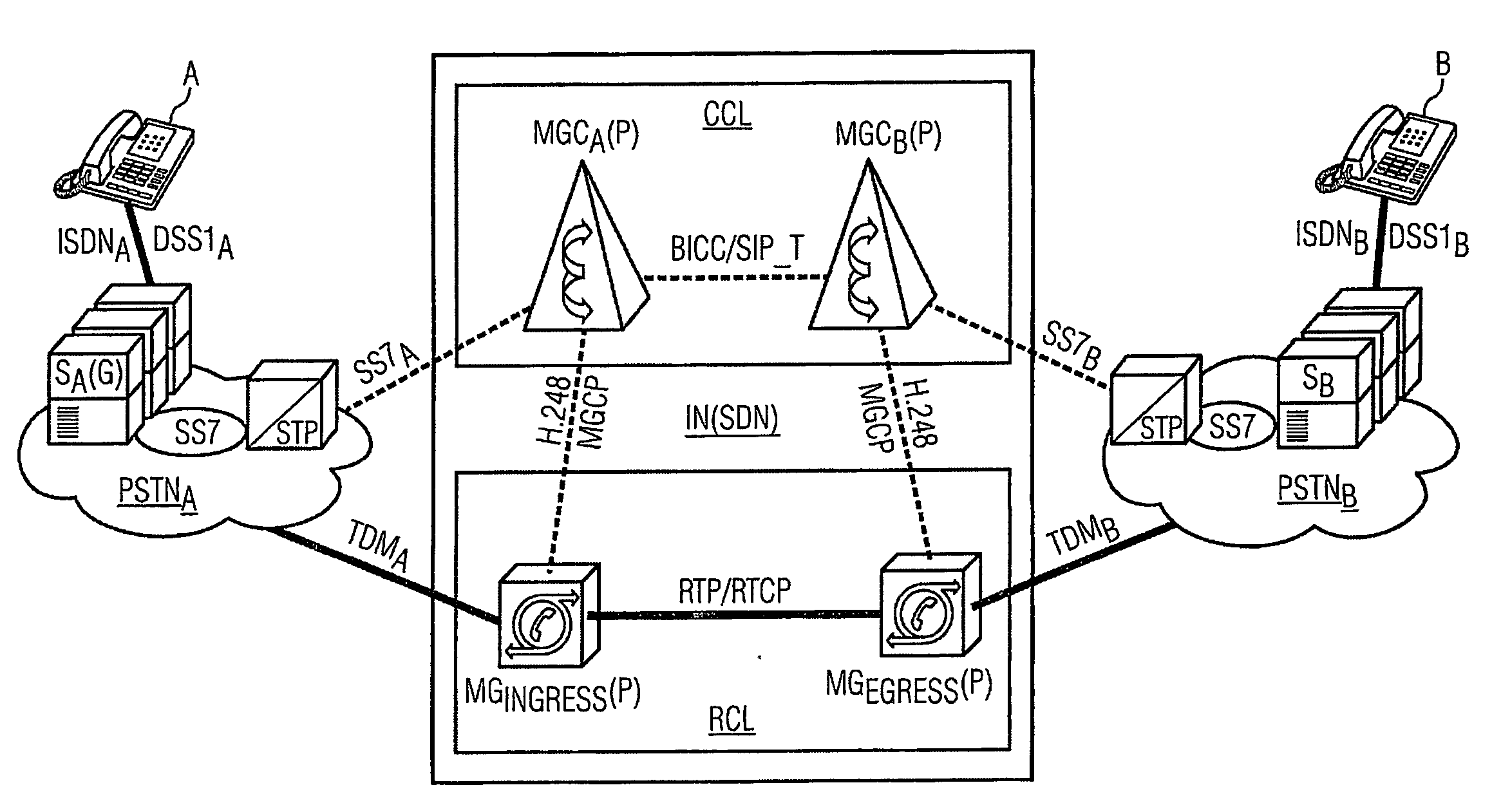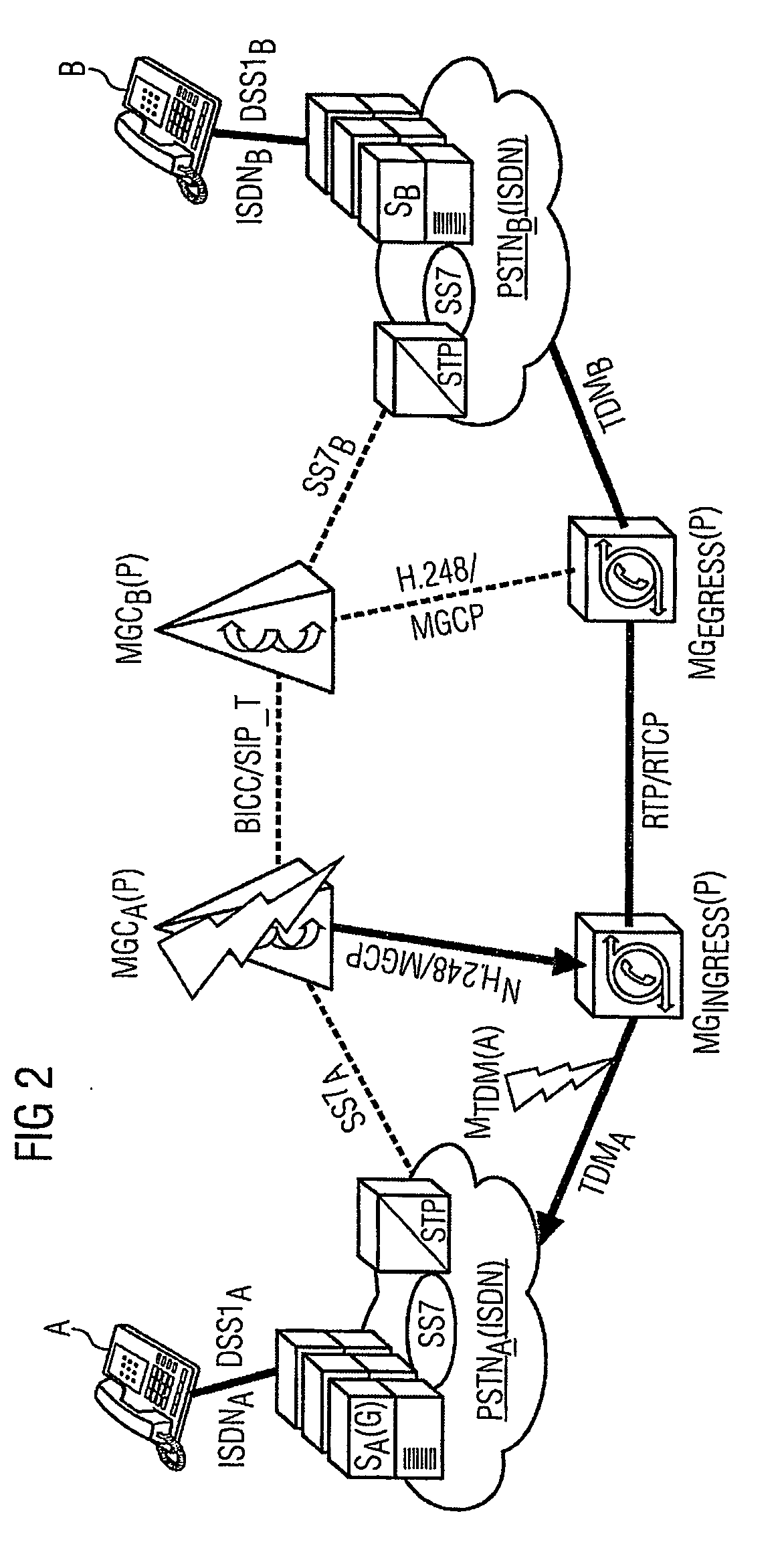Call Release in Communication Networks
a communication network and call technology, applied in the field of call release in communication networks, can solve the problems of data consistency, no longer automatic response, and subsequent respons
- Summary
- Abstract
- Description
- Claims
- Application Information
AI Technical Summary
Benefits of technology
Problems solved by technology
Method used
Image
Examples
Embodiment Construction
[0067]FIG. 1 shows an exemplary arrangement for performing the method according to the invention. It comprises two circuit-switched networks PSTNA, PSTNB and a communication network IN which is preferably embodied as an integrated voice-data network SDN. The three networks are interconnected to form a hybrid network in which the network IN in particular is used for virtual trunking of voice connections between the PSTN networks. The network IN is preferably embodied as an IP network (e.g. the internet). For the appropriate person skilled in the art it is obvious here that the invention can of course be used in other network scenarios, in particular further packet-oriented networks, such as, for example, an intranet, extranet, a local area network (LAN) or a corporate network embodied, for example, as a virtual private network (VPN).
[0068]The network IN includes a call control layer CCL, to which the controllers MGC are assigned, and a resource control layer RCL, to which the media g...
PUM
 Login to View More
Login to View More Abstract
Description
Claims
Application Information
 Login to View More
Login to View More - R&D
- Intellectual Property
- Life Sciences
- Materials
- Tech Scout
- Unparalleled Data Quality
- Higher Quality Content
- 60% Fewer Hallucinations
Browse by: Latest US Patents, China's latest patents, Technical Efficacy Thesaurus, Application Domain, Technology Topic, Popular Technical Reports.
© 2025 PatSnap. All rights reserved.Legal|Privacy policy|Modern Slavery Act Transparency Statement|Sitemap|About US| Contact US: help@patsnap.com



